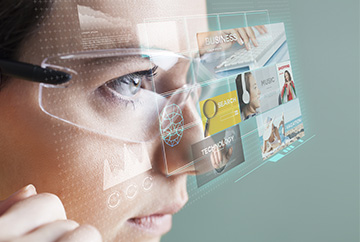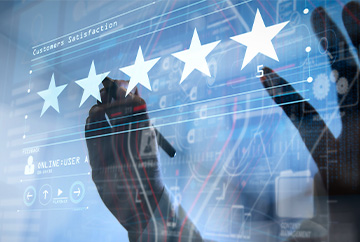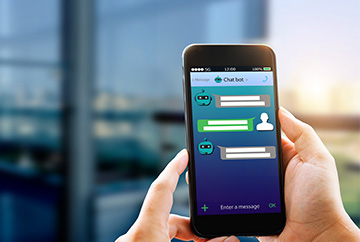For instance, AR can help place an object virtually into immediate surroundings through an interface like smartphone cameras. eCommerce can leverage this technology to boost engagement, build buyer confidence, improve the overall sales and post-sales service experience - more so for high complexity B2B products and services that fit in highly specialized and unique environments.
How is Augmented Reality Disrupting eCommerce – Top Trends
Today, B2C brands can use AR to create highly intuitive experiences - but B2B brands also turn the wheel using AR to disrupt the e-commerce landscape. Here are a few trends that highlight this shift.
Creating touchless digital experiences
Digital services and products or physical VR are helping enterprises create touchless digital experiences, which allow the customer to understand precisely how and where a product fits in their business. For instance, a heavy industrials manufacturer can quickly help their potential customers visualize how a turbine would work in their hydroelectric project and whether the design needs to be customized.
Moreover, as customizability turns into a leading factor in revenue growth, AR-powered digital experiences are becoming the key to high conversion rates at the pre-sales stage. The pandemic has only accelerated this trend since a significant volume of B2B sales has now taken to online channels - it is no wonder that the AR market can grow to $95 bn over the next four years.
Driving engagement and boosting buyer confidence
B2C brands are already leveraging the success of AR in boosting customer engagement. However, B2B brands are still in the process of catching up - since most B2B companies still rely on in-person pitches or video conferencing capabilities to nudge the customer for the last mile.
However, AR experiences are 30x more effective in driving engagement than traditional methods, and leading companies exploit greater attention to build better buyer confidence through real-time simulations that obliterate the need for Q&As and costly demonstrations. The impact of AR on customer engagement has already placed it into a high-maturity technology that will power 40% of all B2B experiences by 2022.
How is Augmented Reality Disrupting eCommerce
Service demonstrations and sneak-peeks
Some brands are also leveraging AR to elevate the core service - in other words, AR can be a high-RoI USP that can replace several traditional, outdated means of engaging with the end-user.
For instance, AR can simulate scenarios within training environments and can reuse these experiences at the pre-sales stage to give a realistic view of the product in question. Moreover, in the post-sales setting, AR is used to turn length handbooks into intuitive digital experiences that simplify the client's relationship with the product and reduce the need for overburdened support teams.
AR for eCommerce
Augmented reality eCommerce examples
Here are a few capabilities that demonstrate the potential of AR technology in B2B eCommerce.
Product Visualization
One of the most intuitive use cases of AR in eCommerce is its ability to render 360-degree views of a product in 3 dimensions. This capability can prove highly effective, especially in component sourcing scenarios, where engineering teams can quickly understand how a component will aid their end product's design.
These visuals fast-tracks deal closures and acceleration of sales for the provider and raise confidence in the client regarding the sourced components. In other words, AR helps ensure that the client gets what they see, even when complex product and component designs are involved.
Augmented reality eCommerce examples
Real-Time Product Fitment Analysis
Another critical issue for the buyer in B2B eCommerce is to ensure that the sourced components are a suitable fit in the overall design. What's more, for the client, such AR-based experiences can also aid in making efficient design decisions while generating high-fidelity leads for the producer. Today, this is relevant across all industries - from oil and gas to discrete manufacturing, healthcare to telecom and cement, and construction.
Ultimately, infrastructure at the field level powers products and services at the end of the value chain. Therefore, real-time fitment analysis can speed up decisions that empower a faster movement of value from start to finish and make the ecosystem much more efficient as a whole.
Virtual Testing
In an age where in-person product demonstrations are becoming increasingly unviable and inefficient, AR can help clients examine and test-drive every aspect of a product or a service virtually without compromising the experience's thoroughness. For example, how does your conveyor belt work on your client's production floor? Is the range of incline sufficient to link the feed and discharge points? What variety of materials and weights can its surface handle? These questions, which a client might be looking for answers to, can be intuitively built into an AR experience that showcases such a product - thereby allowing the client to visualize, test, and virtually configure your product in their environment.





